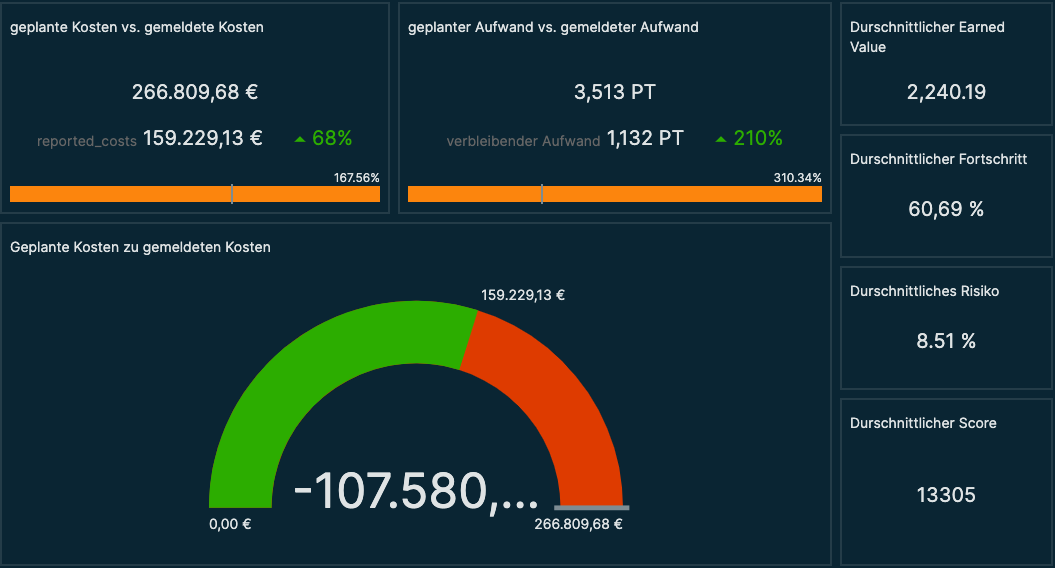Engineering and planning offices are the driving force behind many industries, from construction and manufacturing to energy and environmental technology. To continue to succeed and remain competitive, they must meet specific requirements, especially in dealing with skilled labor shortages and in managing complex customer projects. In this blog article, we will explore these aspects.

Finding qualified engineers and technicians is one of the key challenges for engineering offices. They need professionals who possess both technical expertise and the ability to work well in teams. In times of skilled labor shortages, it is difficult to find and retain such talent. Concurrently, engineering offices must manage complex tasks in client projects under strict time and budget constraints. For example, in a construction project where an engineering office is designing an innovative bridge: This requires technical precision and smooth communication with the client. Modern project management tools and clear communication structures help to complete projects on time and within budget.
In the further course of this article, we go into detail on these topics and offer practical tips on how engineering offices can successfully manage these requirements.
Challenges
Engineering offices face several challenges in project and resource management that are crucial for their success. Here are five specific challenges that frequently occur in this context:
- Transparency over planned project initiatives in the sales pipeline: Without a clear view of which projects are in the pipeline and how far they have progressed in the sales process, resource planning can become unreliable.
- Resource allocation and availability in multi-location projects: Engineering offices must ensure they know who is scheduled for which projects and when resources are available, especially in offices with multiple locations.
- Avoiding employee overload: Excessive work pressure can lead to overload and burnout. Moreover, quality can suffer. Assessing feasibility and tracking progress are essential to avoid overload.
- Changes in project requirements: Changes by the client are common in these projects and must be safely accommodated in the ongoing project.
- Legal and regulatory requirements: These must be considered in the projects because there is often little flexibility.
- Controlling and risk management: An early warning system is necessary to detect early if projects are getting out of control and the budget or timeframe is at risk.
- Communication with clients: Clients expect regular updates on the progress of their projects. Insufficient communication can lead to misunderstandings and loss of trust.
Solutions in Can Do
Can Do offers specific solutions to address the challenges in project and resource management. Below we detail these solutions:
- Transparency in the Project Pipeline: Can Do provides a central overview of all projects in the sales pipeline, including their feasibility. This allows engineering offices to plan more precisely and accurately predict capacity bottlenecks. Thus, the pipeline remains clear, and engineering offices know exactly which projects are up next and how they can optimally allocate resources. Furthermore, the personnel requirements are visible not only in terms of headcount but also in terms of skills.
Features in Can Do:- Simulation of new projects with probability of occurrence
- AI risk analysis "what-if"
- Resource, team, and skill planning even for proposed projects
- Building a project pipeline for sales

Figure 1: A capacity bottleneck due to proposed projects (Yellow) is clearly visible
- Resource Management Across Multiple Locations: Can Do enables the cross-location management of resources and competencies. Engineering offices can track at any time who is scheduled for which projects and when resources are available. This clarity promotes more efficient planning and increases employee satisfaction, as everyone knows what to do and what comes next. Structured resource allocation also reduces the need for frequent coordination meetings, saving time.
Features in Can Do:
- Resource planning across all locations and teams
- AI support for finding suitable personnel worldwide in seconds
- Capacity evaluations by skills globally
- Workload distribution between locations
 Figure 2: Can Do shows the availability of resources and skills globally
Figure 2: Can Do shows the availability of resources and skills globally
- Avoiding Employee Overload: Can Do monitors project progress and feasibility in real-time. This allows engineering offices to detect potential overloads early. They can then take measures to better distribute the workload. This helps prevent burnout and increase employee satisfaction.
Features in Can Do:- Consideration of base loads, working time models, and vacations
- Simulation of optimal workload distribution for personnel
- Consideration of time tracking in the capacity model
- Personal planning by individual employees in real-time

Figure 3: Utilization across all projects
- Changes in Project Requirements During the Ongoing Project: Especially in these projects, client requirements are often changed during the project. The impact on deadlines, costs, and quality can be made immediately visible. Clients can be reliably shown the consequences of such changes.
Features in Can Do:- Revision security and logging for every change
- Baseline plans with various scenarios
- Additional budgets due to changes can be accurately planned and tracked
- Impact on the original plan becomes clearly visible
 Figure 4: Original Planning versus Plan Changes Due to Altered Customer Requirements
Figure 4: Original Planning versus Plan Changes Due to Altered Customer Requirements
- Legal and Regulatory Requirements: The multitude of requirements must be considered in every step of the work process. Through appropriate templates and modules, these are always visible in the project and can be checked off. Tasks can only be completed when all requirements are accordingly considered and documented.
Features in Can Do:- Templates and modules can be easily used and reused
- Overview of all checklists and documents
- Risk assessment if such points are not completed
- Revision-proof documentation in the project for each requirement

Figure 5: Checklist for Building Planning
- Early Warning System for Risks: An integrated early warning system in Can Do signals potential delays, resource overloads, or budget overruns. This feature enables engineering offices to quickly take measures to keep projects within time and budget constraints or to secure additional orders early. Furthermore, these warnings allow engineering offices to learn from mistakes and continuously improve project planning.
Features in Can Do:- Comprehensive risk calculation for all projects and tasks in real-time
- Planned vs. actual comparison for continuous optimization of project planning
- Forecasting of expected risks with complex methods
- Active risk assessment with recommendations for problem-solving

Figure 6: The AI analyzes risks and provides recommendations
- Customer Communication: Can Do provides the capability to regularly inform customers about project progress. This feature facilitates communication with customers, helping to avoid misunderstandings and build trust. Clear and open communication improves collaboration and increases customer satisfaction. Engineering offices can also decide which information to share with customers to ensure everyone is on the same page.
Features in Can Do:
- Automated reporting to customers and other stakeholders
- Performance evidence for invoices
- Impact analysis for customers regarding desired project changes
- Transparent goal tracking through milestones and KPIs

Figure 7: Real-Time Status Dashboards
Conclusion
Engineering offices must face a range of challenges to succeed. Can Do offers a comprehensive suite of tools and features that help engineering offices effectively tackle these challenges. From improved transparency in the sales pipeline to optimized customer communication, Can Do supports engineering offices in working more efficiently, utilizing resources better, and successfully completing projects. This leads to higher employee and customer satisfaction and ultimately to more sustainable business success.
Jetzt anmelden - Can Do Newsletter
As a member of the management board, Thomas is responsible for the operative management of the development including conception, design and further development of the software. He also advises customers on best practices and supports the roll-out.
Why Do Projects Fail? 5 Common Reasons - And How to Avoid Them
Projects are often complex, and even with the best intentions and a competent team, success can elude us. But why do so...
Cost-Cutting - Increasing Efficiency Without Additional Resources
Cost-cutting is currently at the top of the agenda for many companies. In the face of economic uncertainty and rising...
.png?width=200&height=80&name=CanDo%20Logo%20transparent%20(500%20x%20200%20px).png)
